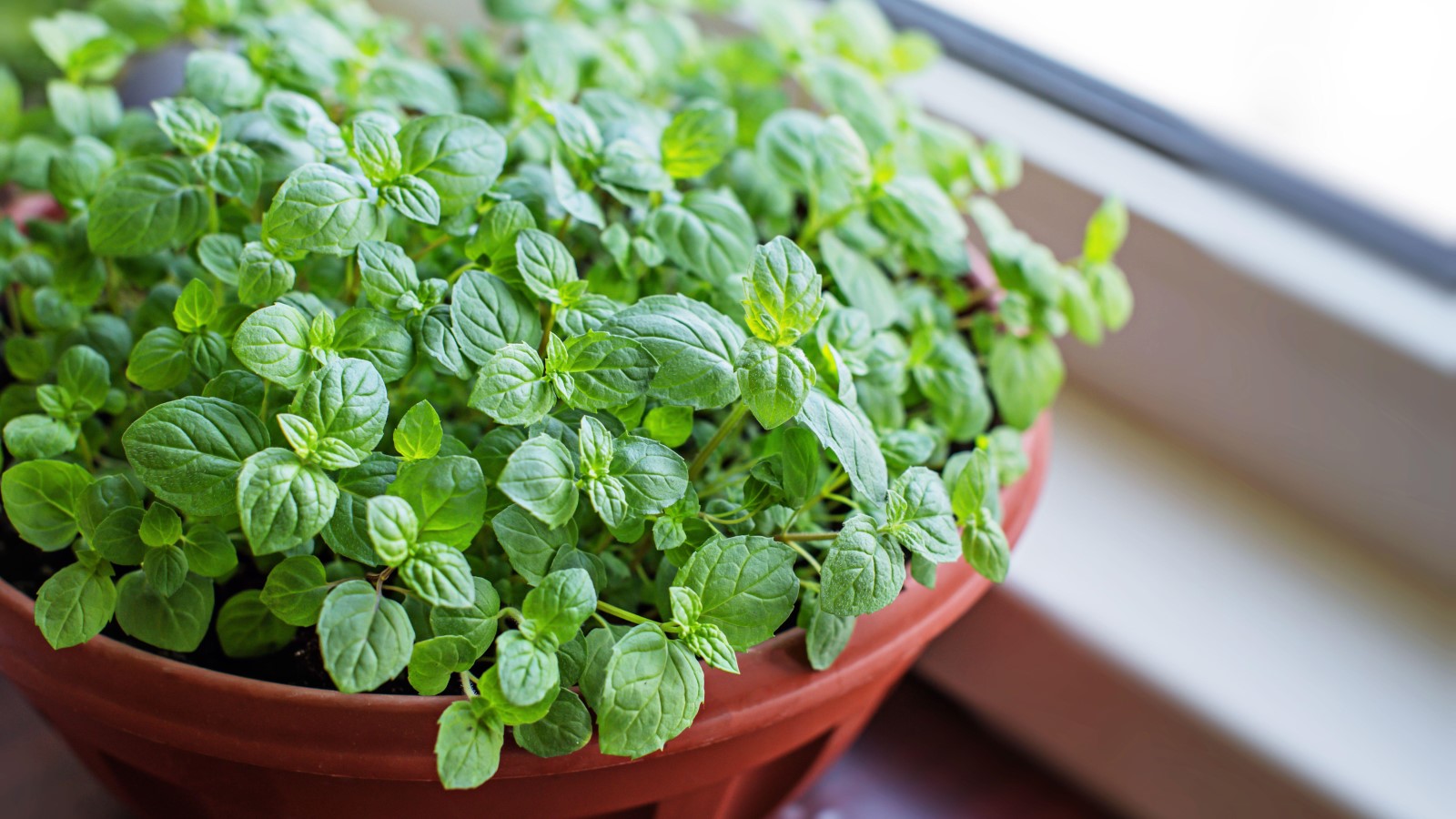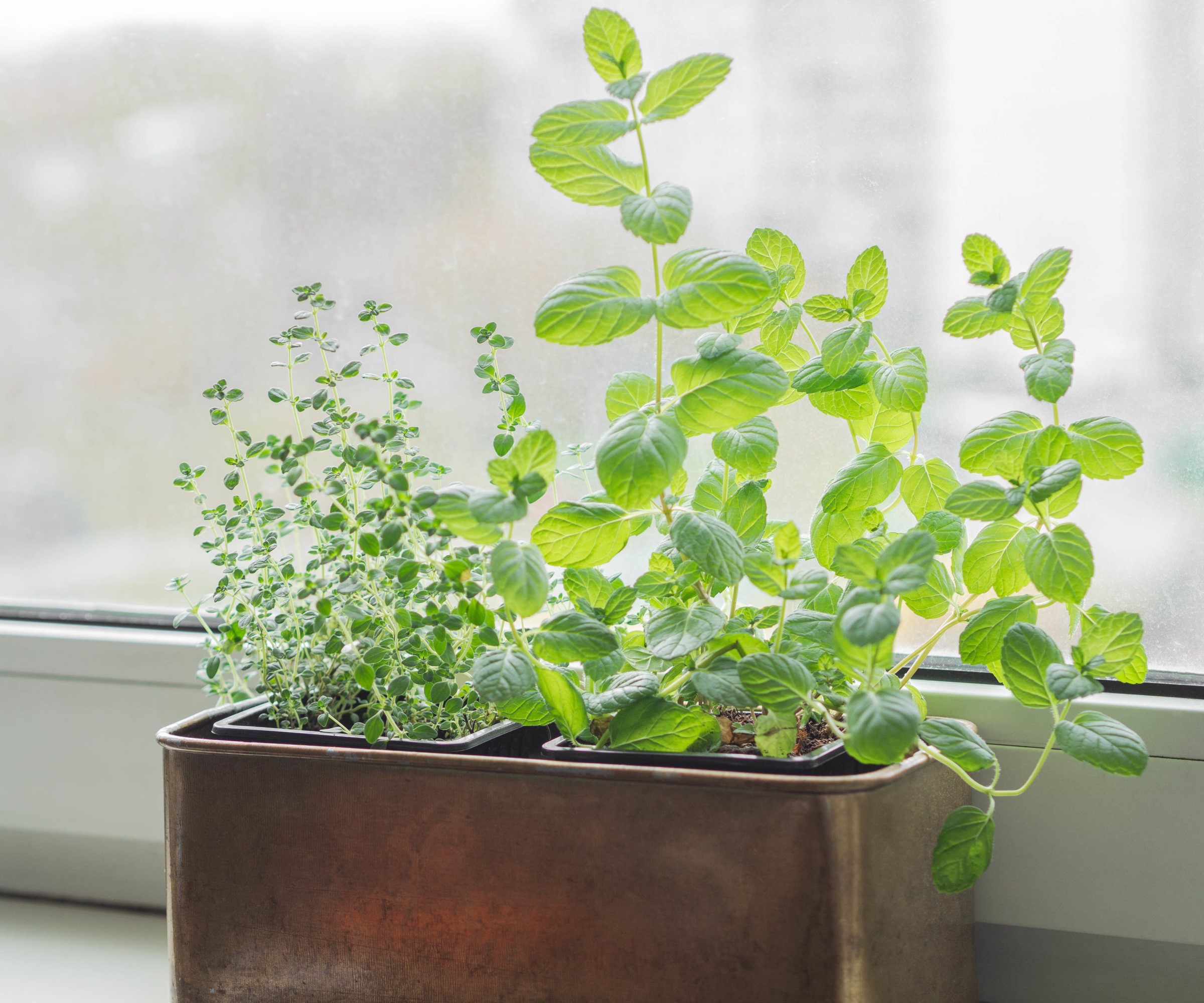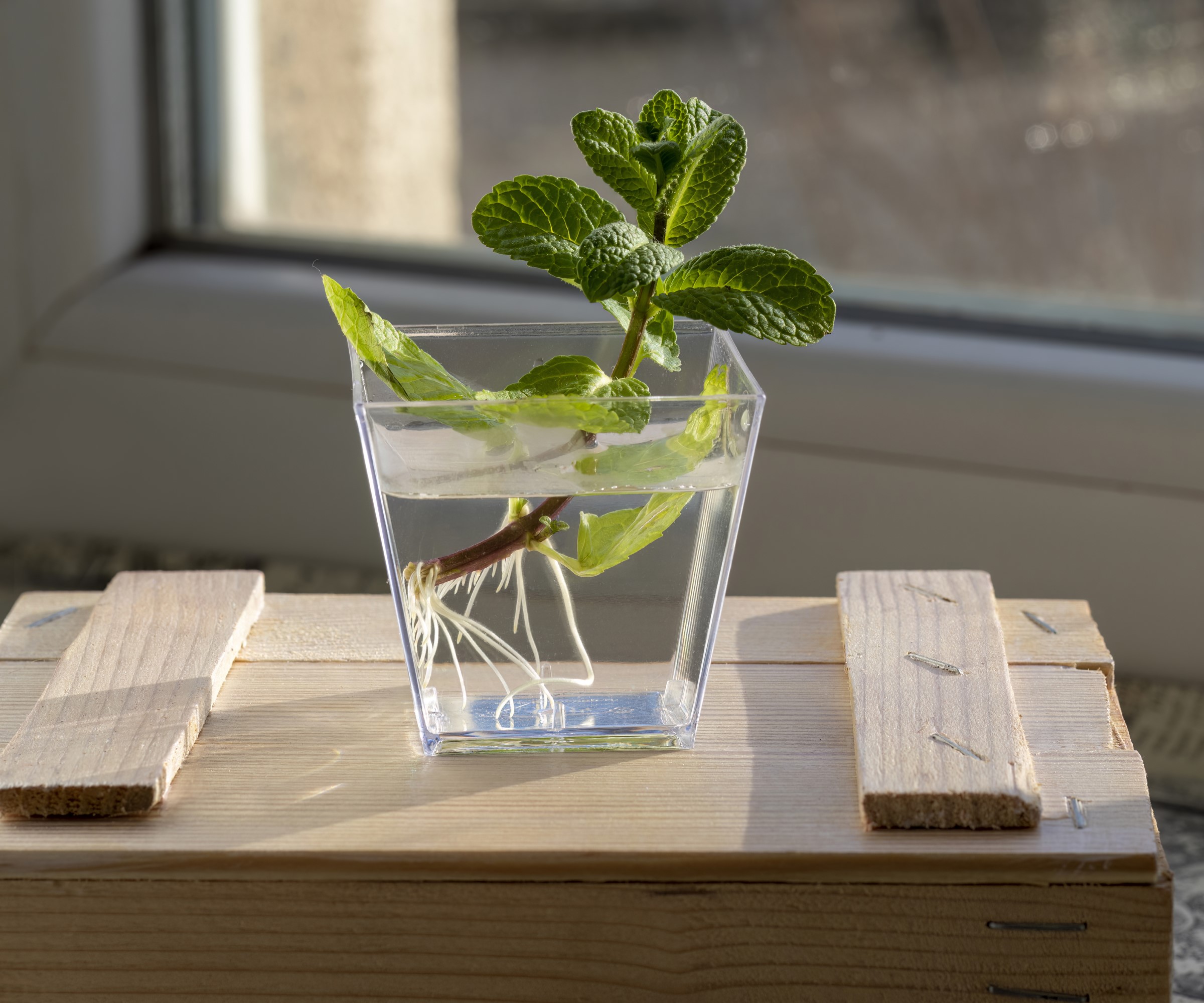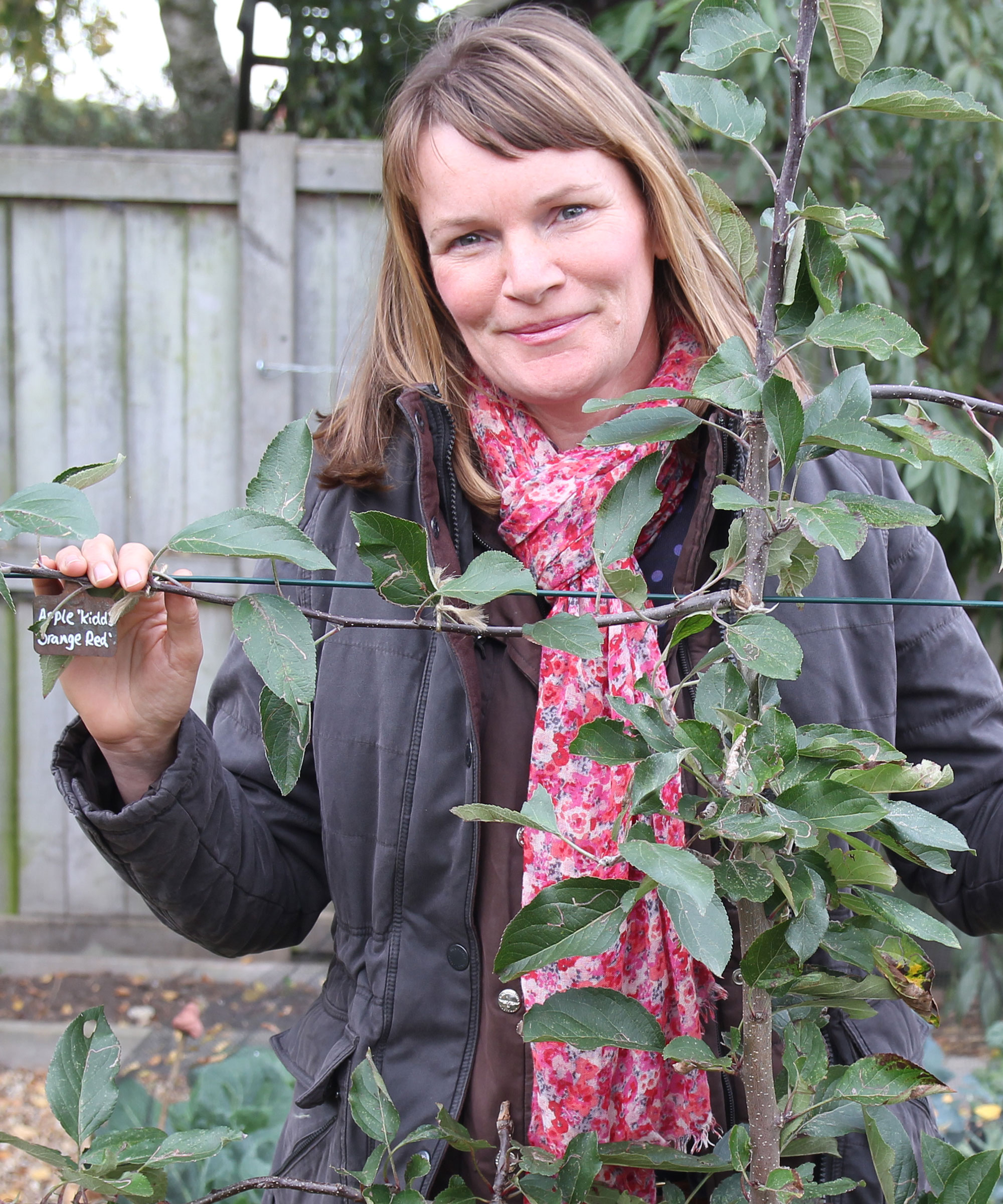How to grow mint indoors – expert tips to succeed with this windowsill crop
Learn how to grow and care for mint indoors for a year-round harvest of leaves


Mint is a hugely popular herb for cooking, teas, cocktails, and more. It can easily and successfully be grown indoors to have a pot of fresh mint at your fingertips inside the home.
If you are wondering how to grow mint indoors, the answer is that it is very simple to have a thriving mint plant on a sunny windowsill year-round. If you grow mint outdoors, you can even bring it indoors over winter so it continues growing.
There are many ways you can start growing mint indoors and all the methods are simple and budget-friendly, for example learning how to propagate mint. There is also a fantastic range of mint varieties to discover and grow, including the likes of chocolate mint, orange mint, or strawberry mint, and all of these unique types can happily grow indoors.

There are hundreds of mint varieties globally
Can you grow mint indoors?
If you want to learn how to grow herbs indoors, it is very achievable and a very simple and enjoyable process. You can grow a whole array of culinary herbs indoors for a year-round supply of fresh leaves if you have no space for outdoor herb garden ideas.
The key to success with growing mint indoors is to give it the light and warmth it requires. Mint wants a bright windowsill to grow in, but it does prefer indirect light during the summer months. East-facing windows are ideal for spring and summer, while south-facing best for fall and winter. The more light the plant can get the better, otherwise it will stretch for light and get leggy. You can use artificial grow lights, such as this LED Grow Light kit available at Amazon, to supplement the amount of natural light if required.
Mint wants daytime temperatures between 65 and 70˚F, dropping no lower than 55˚F at night. Avoid placing the plants near extreme temperature fluctuations, such as near radiators, heating ducts, or air conditioning units.
Ruth Hayes, gardening expert for Homes & Gardens, admits she keeps culinary herbs on the kitchen windowsill as they are ‘so easy to grow and do extremely well in pots if you are short of space’. She adds: ‘In fact, some, such as mint, are best grown in containers.’
Design expertise in your inbox – from inspiring decorating ideas and beautiful celebrity homes to practical gardening advice and shopping round-ups.
Any container needs to be large enough to handle mint’s large roots. Avoid planting mint with other herbs in a windowsill box; it will grow prolifically and is capable of swamping other plants. Any container should be filled with a soil-based compost that is free-draining.

Ruth is horticulturally trained and has qualifications from the Royal Horticultural Society. She spends her days writing about and photographing key gardening jobs – her work for Amateur Gardening and Homes & Gardens varies with the seasons and includes everything from planting and pruning to dealing with pests and diseases.

Giving them lots of light is key to growing windowsill herbs
How to grow mint indoors
When growing mint indoors there are options for how to propagate herbs, some are simpler and more instant than others. The easiest choice is to buy a small mint plant from a store or garden center to pot up at home.
An alternative way is to take cuttings, and mint is a very simple plant to take cuttings from. Simply take cuttings 5-6 inches in length from a mint plant, remove the lower 2 inches of leaves and place in water on a sunny windowsill. The cuttings will quickly put out roots and once they are a few inches long you can carefully plant the herbs in your chosen potting mix.
You can grow mint from seed, with mint seeds regularly available in garden centers or online. Sow the seeds thinly in compost, keep them moist, and the seeds should germinate within a few weeks at 70˚F. Mint seeds are not too tricky to germinate and it should take only around three months to go from sowing the seeds to a first harvest of mint leaves. You can buy mint seeds and plants from Burpee.

Mint very quickly puts out roots in water
How to care for mint plants indoors
Mint wants to be watered regularly when growing indoors. If you are trying to judge when to water the plants, mint wants the soil to be moist but not sodden. When watering plants in containers, it is advisable to check the moisture levels an inch or two under the soil using your finger. Make sure not to over-water the mint and water only at least once a week.
When growing mint indoors the plants do want light, but they should be rotated at least once a week to stop the plant from bending towards the light. It does not need to be hugely rotated, a quarter turn will be more than enough. Air circulation is also important to prevent fungal disease build up, so try to provide some air movement around the mint on a regular basis.
Fertilizing indoor mint is not a required task and giving them too much feed can actually cause the plants to lose their flavor. Any feed should be balanced and applied at half-strength to avoid over-fertilizing mint.
Harvest mint regularly once the plant reaches three inches tall. Simply snip off stems as required and this will encourage new growth and help keep the plants bushy. Regular pinching to trim the stems will stop the plant from getting too leggy. The trimmings from this mint pruning can be used in the kitchen.
Lucy Chamberlain, fruit and veg expert for Homes & Gardens, recommends that mint in pots outside should even be brought indoors to extend their cropping. She says: ‘Hardy perennial herbs that would normally die back down for winter, such as mint, can be forced into growth indoors’.
After bringing a mint plant indoors it will continue to keep growing, albeit at a slower rate during the winter. It means you can extend the harvest period and enjoy homegrown mint over the winter months.

Lucy was a Horticultural Advisor at RHS Wisley and has been Head Gardener on a 100-acre estate in England for many years, but writes regularly for titles such as The Garden, Gardeners’ World, The Guardian and Amateur Gardening. She’s also the author of RHS Step by Step Veg Patch, available from Amazon, which covers 50 types of fruit and veg.
As well as for leaves to pick for teas or cocktails, growing an aromatic herb like mint can offer other benefits indoors. Mint is one of the smells that ants hate and having a pot on a windowsill can deter these pests from the home and, in a similar vein, mint is a great fly repellent plant. By growing mint indoors you can both combat pests and have year-round access to this extremely versatile herb.

Drew has worked as a writer since 2008 and was also a professional gardener for many years. As a trained horticulturist, he worked in prestigious historic gardens, including Hanbury Hall and the world-famous Hidcote Manor Garden. He also spent time as a specialist kitchen gardener at Soho Farmhouse and Netherby Hall, where he grew vegetables, fruit, herbs, and cut flowers for restaurants. Drew has written for numerous print and online publications and is an allotment holder and garden blogger. He is shortlisted for the Digital Gardening Writer of the Year at the 2025 Garden Media Guild Awards.